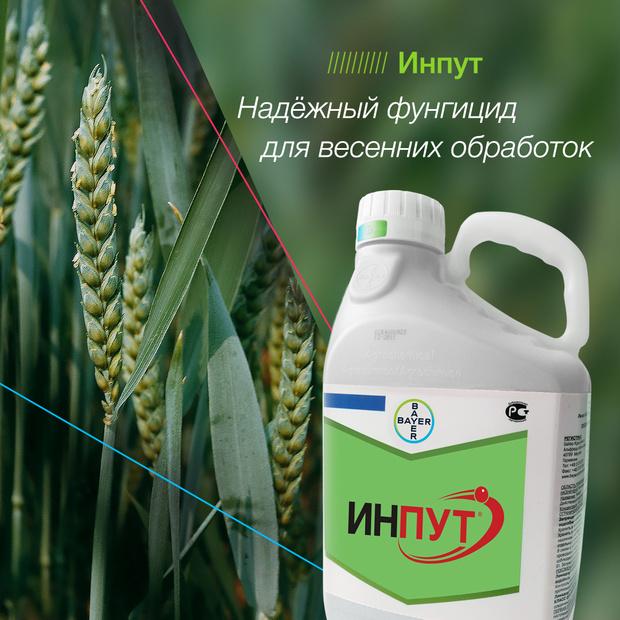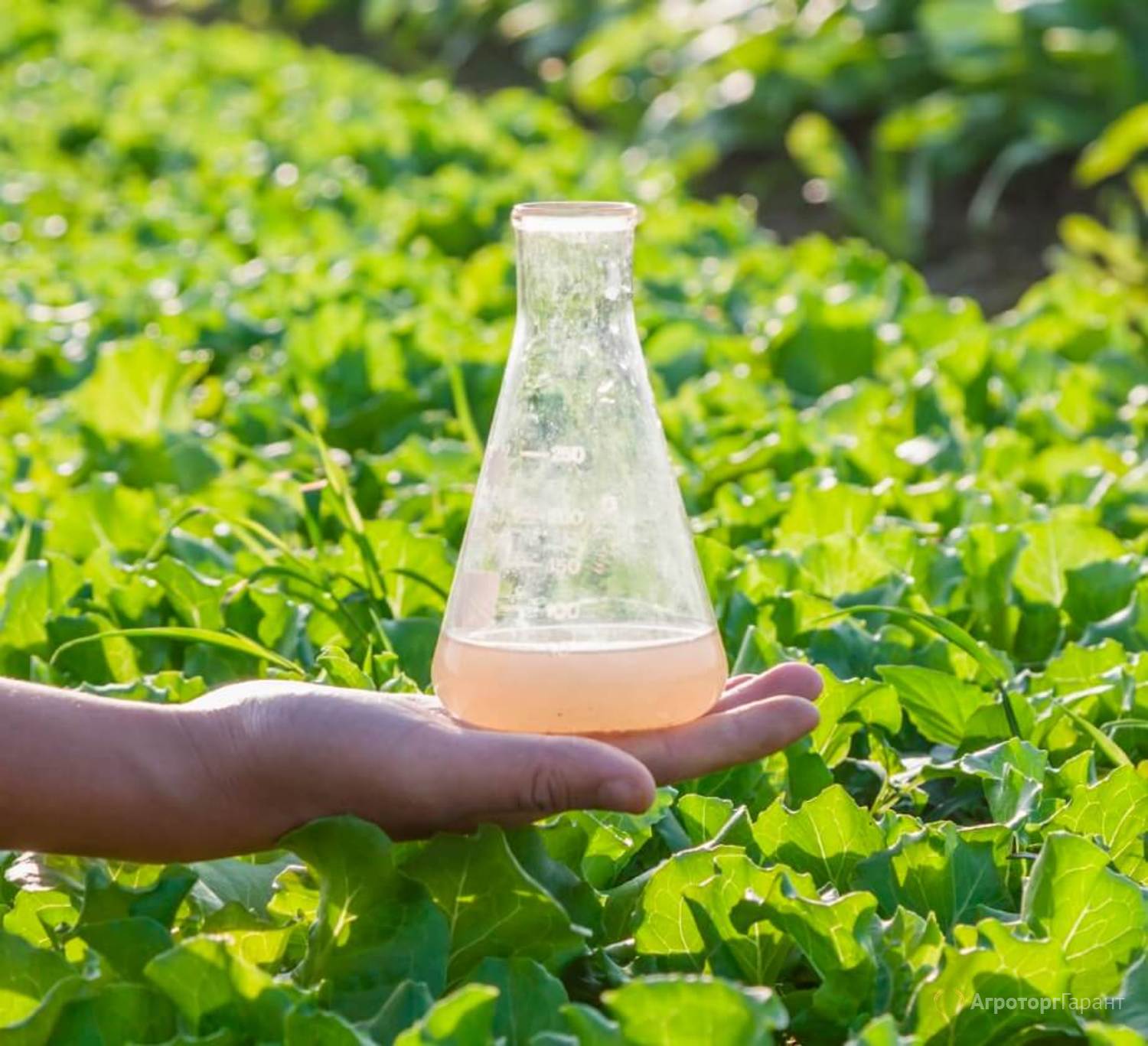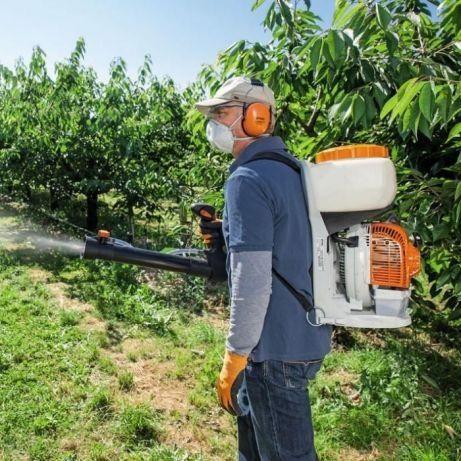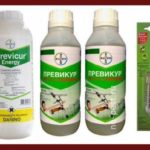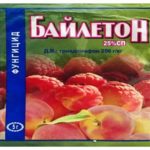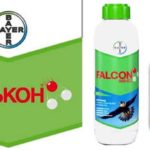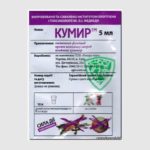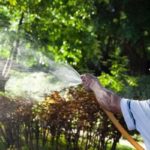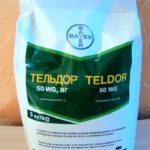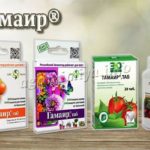Special preparations have been developed for processing wheat, spring and winter. One of them is the Input fungicide, produced by the well-known company Bayer. Let's consider the principle of action, purpose, composition, dosage and consumption rates of the drug. Compatibility with other pesticides, toxicity class and safety measures when working with it, analogues of the product.
Form, active substance of the fungicide "Input"
“Input” is a concentrated emulsion produced by Bayer, one of the leaders in the production of agrochemicals. The manufacturer provides a guarantee on product quality, drug reliability and safety in relation to cultivated plants.
The active ingredients of the fungicide are prothioconazole in an amount of 160 g per 1 liter and spiroxamine in an amount of 300 g per 1 liter. The substances belong to different classes of chemicals, which increases the overall effectiveness of the drug. “Input” refers to systemic pesticides, by the nature of action – to protective pesticides and immunizing fungicides. It is produced by the manufacturer in 5 liter canisters, as it is intended for treating large industrial areas.
Purpose, indications for use
Designed for protective treatment of wheat in early spring and autumn against diseases of leaves and stems and cercosporellosis. Temperature conditions for using the drug are not higher than 15 ˚С.
The treatment is carried out during the tillering period; the product can be used as a therapeutic and preventive measure. The duration of the protective effect of the drug is up to 1 month, the effectiveness reaches 90%.
How does it work?
Spiroxamine in the fungicide stops the formation of mycelium and blocks the synthesis of ergosterol, a substance that is an integral part of the fungal cell wall. Spiroxamine exhibits high activity at temperatures of 12-15 ° C and is effective against fungi that cause powdery mildew; the substance was created as an alternative to morpholines.
Another substance, prothioconazole, stops the process of sterol synthesis and disrupts the permeability of cell membranes of pathogenic microorganisms, stopping the growth of mycelium of harmful fungi.
The pesticide “Input” not only inhibits the growth of fungi, but also has a positive effect on germination, the development of the root system, bushiness, and plant resistance to drought. And also on the quality of grain, improves its characteristics. Increasing tillering capacity by 1.5 times during the initial period of wheat growth increases drought resistance and improves the crop's consumption of moisture and nutrients.
Dosage and instructions for use of the drug
To treat winter wheat against powdery mildew and rusts and against septoria, cercosporellosis and pyrenophorosis, 0.6-0.8 liters of the drug per hectare is consumed. Sprayed during the growing season as a preventive measure or treated when the first signs of disease appear. Number of sprays – 1 or 2. Waiting period – 21 days.
To treat winter wheat against fusarium head blight, 1 liter of the “Input” preparation is used per hectare. Spraying is done at the end of tillering and the beginning of heading. Treat once, using 300 liters per hectare. The waiting period is 21 days. After the waiting period ends, you can begin harvesting.
Safety precautions when working with the product
In terms of toxic properties, the fungicide “Input” belongs to drugs of hazard class 2. This class includes toxic substances, contact with which can lead to poisoning.
It is prohibited to use it near water sources, no closer than 5 km from apiaries (hazard class for bees - 3).People can work with it only in protective tight clothing and shoes; be sure to wear a respirator or gas mask, plastic goggles, and thick rubber gloves. Protective agents prevent contact of the product with the skin, eyes, respiratory tract and esophagus. During spraying, do not take off your respirator, glasses, drink, eat or smoke. There should be no strangers near the treated area.
After work, you need to clean your clothes and other protective equipment, wash and dry them, and wash your hands and face well with soap and water. Wash the equipment with a solution of soap and soda or water acidified with vinegar and dry. If signs of Input poisoning are detected, you should urgently rinse your stomach with water and then consult a doctor. If the solution gets on the skin of the body or mucous membranes, rinse them with water.
Toxicity and compatibility
Input is compatible with many insecticides and fungicides. But, as the manufacturer indicates, in each case you must first check the compatibility of the drugs by diluting them in a small amount of water, and then, if everything is fine, diluting them in the working solution. If changes in color or consistency are observed, or if a precipitate occurs, the drugs should not be mixed. It is necessary to find other fungicides that are compatible.
Storage conditions and periods
It is prohibited to store and transport Input fungicide together with food, medicines, hygiene products, and animal feed. Storage is permitted only in a separate, little-frequented room, if there is a large quantity of the drug - on racks, stacked in tiers of no more than 3 layers.
Store the Input fungicide in the original packaging, closed with a lid, in a dry, dark, cool place for no more than 2 years from the date of production.After the expiration of the shelf life, all residues must be disposed of in a specially designated place. The remains of the working solution also cannot be stored, therefore, during the preparation of the solution, it is necessary to dilute so much of the drug so that no excess remains. Discard all unused volume as well.
Analogs
Other fungicides with the same effect are “Falcon”, “Soligor”. They contain the same active ingredients, so they can replace the “Input” preparation for processing spring and winter wheat. You can also alternate agents to prevent the development of resistance in microorganisms.
Bayer's Input fungicide has a quick action and long-lasting protection. No phytotoxicity was detected after the tests. The drug is considered reliable for the prevention of fungal infections of wheat that develop during the tillering period. Effective against spotting and powdery mildew, cercosporellosis. The effectiveness of the new fungicide reaches 90%. It is recommended to spray in spring and autumn, when the air temperature does not rise above 15 °C (under conditions where triazole fungicides are not effective enough). “Input” from Bayer begins to act immediately after spraying; a single treatment is enough for the final effect.

